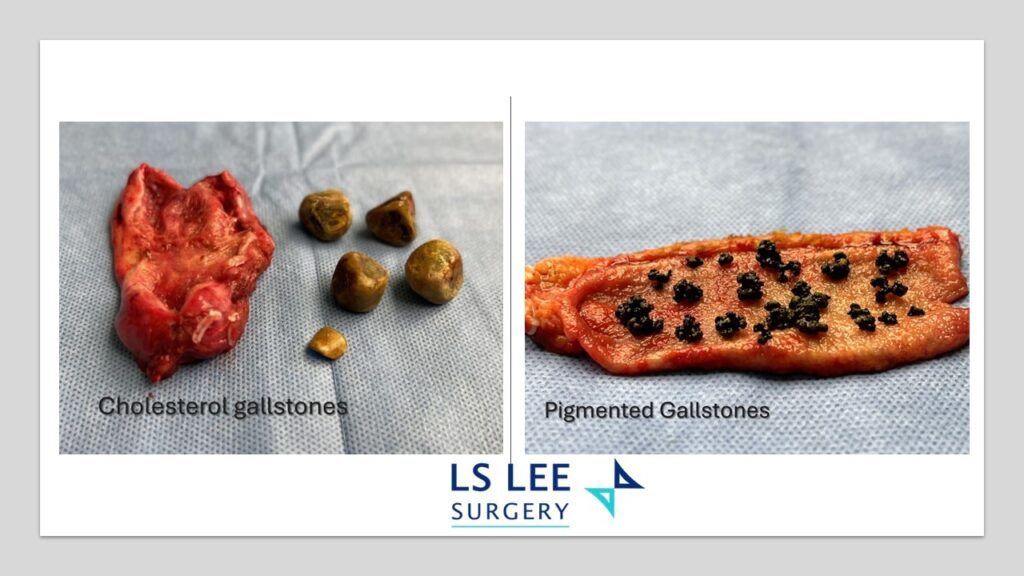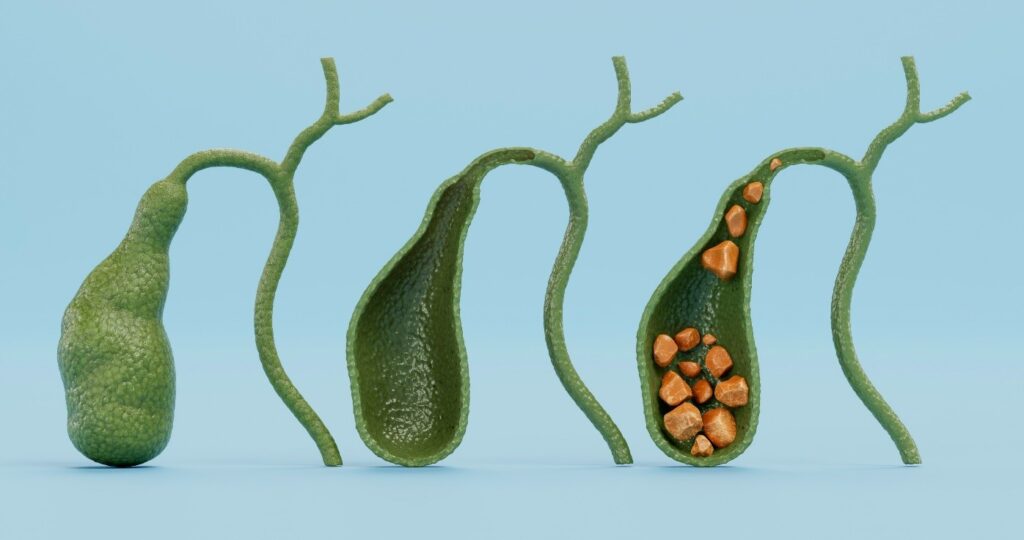Gallstones are quite common, affecting about 20% of the population. But what exactly are gallstones, and do you need to remove your gallbladder if you have them? Let’s dive into the details.
Why Do Gallstones Form?
Gallstones come in two types: cholesterol gallstones and pigment gallstones. Cholesterol gallstones form when there is too much cholesterol in the bile, which the liver secretes. If there aren’t enough bile salts to dissolve this cholesterol, it crystallizes, forming stones. Factors like obesity, a high-fat diet, genetics, and certain medical conditions can contribute to this process.
Pigment gallstones, on the other hand, are made of bilirubin, a substance produced from the breakdown of red blood cells. Conditions such as liver cirrhosis, biliary tract infections, and specific blood disorders can lead to an excess of bilirubin, which then combines with calcium to form pigment stones.

Risk Factors for Gallstones
Certain elements can increase the likelihood of developing gallstones:
- Obesity: Excess body weight can increase cholesterol levels in bile, leading to cholesterol gallstones.
- Diet: High-fat, high-cholesterol, and low-fiber diets can contribute to gallstone formation.
- Genetics: A family history of gallstones raises your risk.
- Age and Gender: Gallstones are more common in individuals over 40 and more prevalent in women.
- Pregnancy: Hormonal changes can increase cholesterol concentration in bile and reduce gallbladder motility.
- Rapid Weight Loss: Crash diets or bariatric surgery can cause the liver to secrete extra cholesterol into bile.
- Medical Conditions: Conditions like diabetes, liver cirrhosis, and certain blood disorders can increase the risk.
- Medications: Hormone replacement therapy and certain cholesterol-lowering drugs can raise the risk.
When Do Gallstones Cause Problems?
Gallstones can remain unnoticed for years. Problems arise when they obstruct bile flow, leading to symptoms such as:
- Intense pain in the upper right abdomen, often radiating to the back or right shoulder, lasting from minutes to hours.
- Nausea and vomiting.
- Jaundice (yellowing of the skin and eyes) if the bile duct is blocked.
- Fever and chills if there is an accompanying infection.
Size Matters
The size of gallstones can affect the severity of symptoms. Smaller stones are more likely to pass into the bile duct and cause blockages, leading to jaundice and pancreatitis. Larger stones are more likely to get stuck in the gallbladder neck, causing gallbladder infections (cholecystitis).
When is Surgery Necessary?
Not all gallstones require surgery. If they are incidentally found and asymptomatic, they can often be left alone. However, if you experience symptoms such as pain after eating, it might be time to consider surgery.
The common symptoms indicating a need for surgery include:
- Pain in the upper abdomen after meals, which increases in frequency over time.
- Complications such as cholecystitis and jaundice.
If you experience these symptoms, seek medical attention.
Conclusion
Gallbladder removal surgery, while generally simple, does carry risks. It should be performed only when indicated and after a thorough consultation with your surgeon. Your treatment journey and outcome are of utmost importance. Seek a skilled liver and gallbladder surgeon who can guide you through the process from diagnosis to recovery. At LS Lee Surgery Singapore, we aim to provide individualized care and help you every step of the way. Contact us today for a clear diagnosis and treatment plan if you or your loved ones experience gallbladder-related issues.







